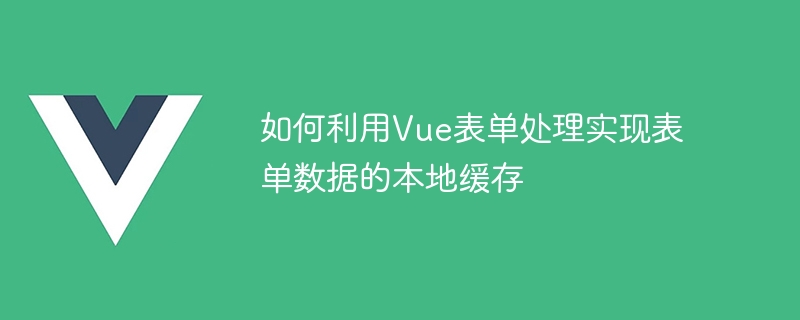

How to use Vue form processing to implement local caching of form data
In front-end development, forms are a data interaction method we often encounter. In most cases, we need to submit the data filled in the form. However, in some special scenarios, we may need to cache the filled-in form data locally so that the user can restore the previously filled-in content the next time he opens the page. This article will introduce how to use Vue form processing to implement local caching of form data.
First, we need to use the Vue framework to build our page. In Vue, we can use thev-modeldirective to bind form elements to data in the Vue instance. In this way, when we enter data in the form, the corresponding data will be updated in real time.
The following is a simple Vue component example showing how to use thev-modeldirective to bind form elements and data in a Vue instance:
In the above code , we used thev-modeldirective to bind the input element to thenamedata in the Vue instance. In this way, when we enter content in the input box, thenamedata will be automatically updated.
Next, when the user clicks the save button, we save the form data to the local cache so that it can be restored next time. In the sample code, we use thelocalStorageobject to implement local caching.localStorageis part of Web API, which allows us to store key-value pair data in the browser.
In thesaveDatamethod, we use thelocalStorage.setItemmethod to save thenamedata in the form to the local cache. When saving to the local cache, we can use any key value to identify different form data.
When the user opens the page next time, we need to read the previously saved form data from the local cache and restore it to the form. We can implement this logic in thecreatedlife cycle hook of the Vue component:
In the above code, we use thelocalStorage.getItemmethod to cache from the local Read the form data in and assign it to thenamedata in the Vue instance. This way, the data in the form is automatically restored when the user opens the page.
To sum up, we can use Vue'sv-modeldirective andlocalStorageobject to implement local caching of form data. By binding the form elements to the data in the Vue instance, we can achieve the effect of updating form data in real time. By leveraging local caching, we can restore previously filled out form data the next time the user opens the page. This implementation of local caching of form data can greatly improve the user experience and reduce the duplication of work for users to fill out forms.
The above is the detailed content of How to use Vue form processing to implement local caching of form data. For more information, please follow other related articles on the PHP Chinese website!